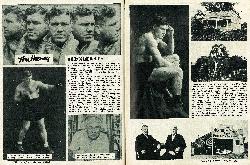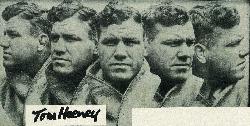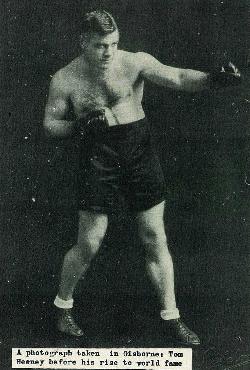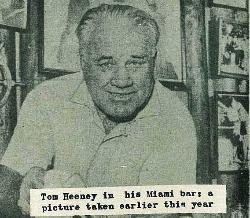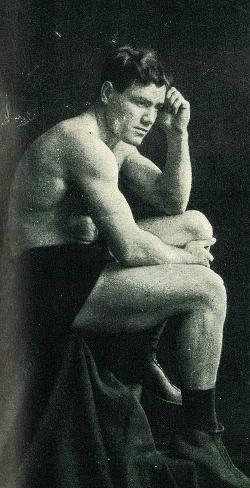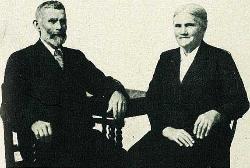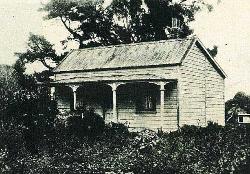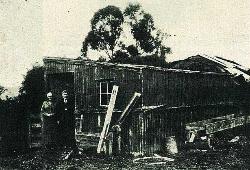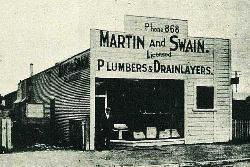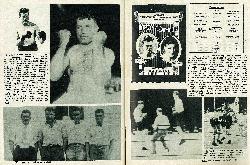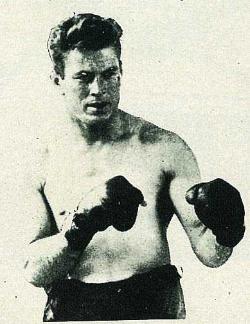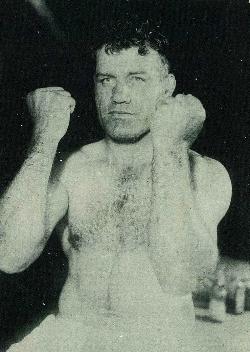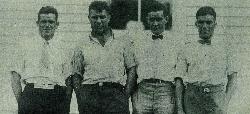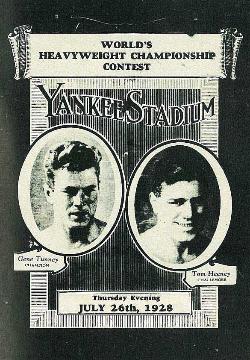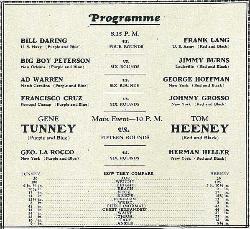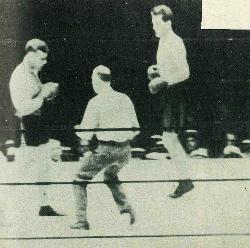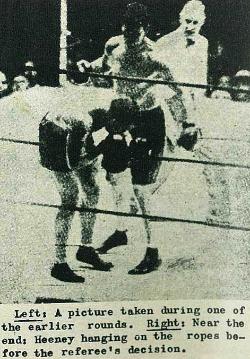20
Tom Heeney Gisborne's Famous Fighter
In the days when the Heeney boys were at their best, Gisborne was known throughout New Zealand as the home of boxing champions. At one time, in 1921, Jack Heeney held the Dominion middle–weight title, and Tom Heeney the heavyweight title.
The pictures on this and the next three pages tell the story of Tom Heeney, who was born and brought up in Gisborne, worked for a plumber in Gladstone Road, and in the ring brought lasting fame to himself, his family, his home town, and his country.
His story belongs to the days when Jack Dempsey captured the imagination of the world as supreme heavyweight champion. Dempsey was succeeded by Gene Tunney. Tom Heeney, the "hard rock from down under", was the Gisborne boy who was matched against Tunney for the world boxing crown at the Yankee Stadium in New York. That was in 1928. Tom didn't win —but he stood up to the champion for eleven rounds, and won universal admiration for his courage and tenacity as a real fighter.
21
Tom was the ninth child of Mr and Mrs Hugh Heeney, old–time residents of Kaiti, seen in the picture below left. The family home at Kaiti, and the "gym" at Heeney's place, where his dad taught the boys the first elements of boxing, are seen above. Tom went to St. Mary's School and then worked for 13 years for Mr E. Martin, plumber, whose premises in Gladstone Road are shown below. The future heavyweight title contender represented Poverty Bay at Rugby, notably in the game against the Springboks in 1921, and he was also a good runner. But his chief delight was in swimming at Waikanae Beach, and it was there he won the Royal Humane Society's medal for his part in rescuing two girls caught in the undertow.
22
Tom turned professional in 1921, and after winning a number of fights in New Zealand, left for pastures new in Australia, England, and South Africa. In 1926 he landed in America, where he won a number of important bouts, and made a good impression as a "downright honest fighter". When the question arose, of who was to fight the "champ", Tunney, for the title, there were only three serious contenders-—Dempsey, Delaney, and Sharkey. In the preliminary bouts the boy from down under was brought in to make up a match. He beat Delaney, drew with Sharkey—and Dempsey retired. That left Heeney as the logical contender--and so it was.
New York pictures here show Tunney and Heeney on the eve of the fight and Tom with his three brothers, who had come to America for the occasion. Left to right, Arty, Tom, Pat and Jack.
23
It was a big night for the boy from Gisborne. The Yankee Stadium Was packed with boxing fans who had paid 700,000 dollars to see the fight. Among then were Tom's three brothers. Tom knew what he was up against. Tunney was a big man, a good fighter, and a skilful and intelligent boxer. Against his dazzling left, quick footwork, and general brilliance, Tom matched bustling tactics, boring in and hoping to land the decisive blow. He rocked the champion in the fourth round, but Tunney had an answer to everything Tom could do. As the fight progressed through rounds eight, nine and ten, the New Zealander was taking more and more punishment. In the fatal round eleven, the referee decided he had had more than enough, and gave the fight to Tunney on a T.K.O.
Tom collected enough from the gate to set himself up financially. He retired from the ring in 1933 and later bought and ran a bar in fashionable Miami Beach, Florida.


